NEWS
14.09.2023
Could Hoipoi Capsules Really Exist Someday? We Asked Real Engineers Who Are Developing A "Portable Vehicle"!

Hoipoi Capsules were a huge help to Bulma and Goku during their journey to find the Dragon Balls. With just one simple toss, these amazing little capsules can make useful items like bikes, planes, and even homes complete with electric appliances available to you in an instant.
If science continues to progress, will there come a day we're able to create things like the Hoipoi Capsules that can convert physical objects into particles?
I interviewed two gentlemen working on research and development of the futuristic mobility device "poimo," Ryosuke Yamamura from Mercari's Research and Development team "mercari R4D," and Tokyo University Professor Yoshihiro Kawahara.
Profiles
Interviewee: Ryosuke Yamamura
Researcher on the mercari R4D team at Mercari, Inc. Co-Researcher in the Value Exchange Engineering Research Program at the University of Tokyo's Research Institute for an Inclusive Society through Engineering (RIISE).
Joined DENSO Corporation in 2008 and led research, development, and design of injectors for diesel common rail systems in addition to overseeing the launch of new business projects, etc. Joined Mercari, Inc. in March of 2018, and has been in charge of research and implementation of poimo from 2019.

Interviewee: Yoshihiro Kawahara
Professor of Electrical Engineering and Information Systems at The University of Tokyo's Graduate School of Engineering.
His mission is to design "the lifestyle of the future" through research and development of core technologies of Computer Networks and Ubiquitous and Mobile Computing.

Interviewer: Maishiro
Entertainment analyst. Author of many articles based on serious research (including data analysis and interviews) into non-serious subjects. Articles often featured on Yahoo's freelance page and the Daily Portal Z website. Has a particular fondness for music, films, and manga! Twitter:@_maishilo_
Contents
—First, I wanted to ask you about the soft, inflatable, electric mobility aid, "poimo". What kind of vehicle is poimo?
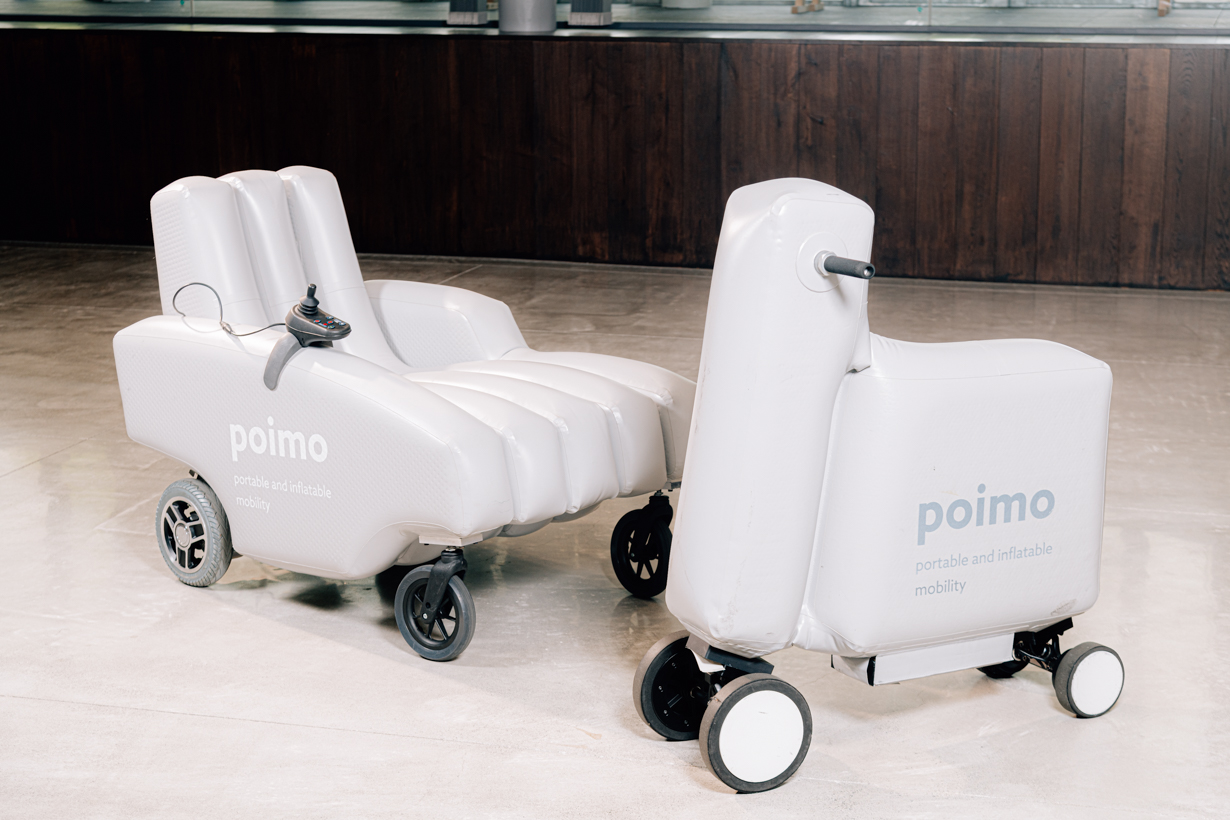
The relaxed sofa-style poimo (left), and scooter-style poimo (right)
Yamamura: poimo is a safe, electric mobility aid made of a soft, lightweight material.
The scooter style can be folded down to about a tenth of its full size, so it can fit in a backpack. When you want to use it, all you need to do is blow it up and you'll be ready to go. The sofa style lasts about four hours on one charge.
—This really is just as convenient as a Hoipoi Capsule! Tell me more about how you came up with this idea!
Yamamura: Around 2018, there was talk at Mercari Group of developing a new service vehicle called Meri-chari. Around that time, there was a research workshop led by Professor Kawahara, who I was already doing joint research with, and the idea of a "soft, foldable vehicle" came up.
—The name "poimo" sounds a little like Hoipoi Capsule to me...
Yamamura: Oh, that's just a coincidence! (Laughs). Actually, poimo is an abbreviation for "POrtable and Inflatable MObility.
We had to come up with a name in three days after the "soft, foldable vehicle" was selected to be publicly advertised. Then, after coming up with a lot of different ideas, we wanted to use many rounded letters as it's a soft vehicle, and so we decided on this name.
But you aren't the first person to point this out. During the early stages of development, someone else said, "Doesn't it seem like a Hoipoi Capsule?" After that, this connection spread, and other people started saying, "Wouldn't it be nice if you could carry it around like a Hoipoi Capsule?" and "It would be great if we could get it to pop out of something when you throw it, and you could use it right away."
—When you throw a Hoipoi Capsule, things like an airplane or a house pop out, but doesn't it take time to inflate a poimo?


Yamamura: It's doesn't work quite as fast as the Hoipoi Capsule, but it only takes about a minute and a half per part. The chair style has five parts, so it wouldn't even take ten minutes to inflate.
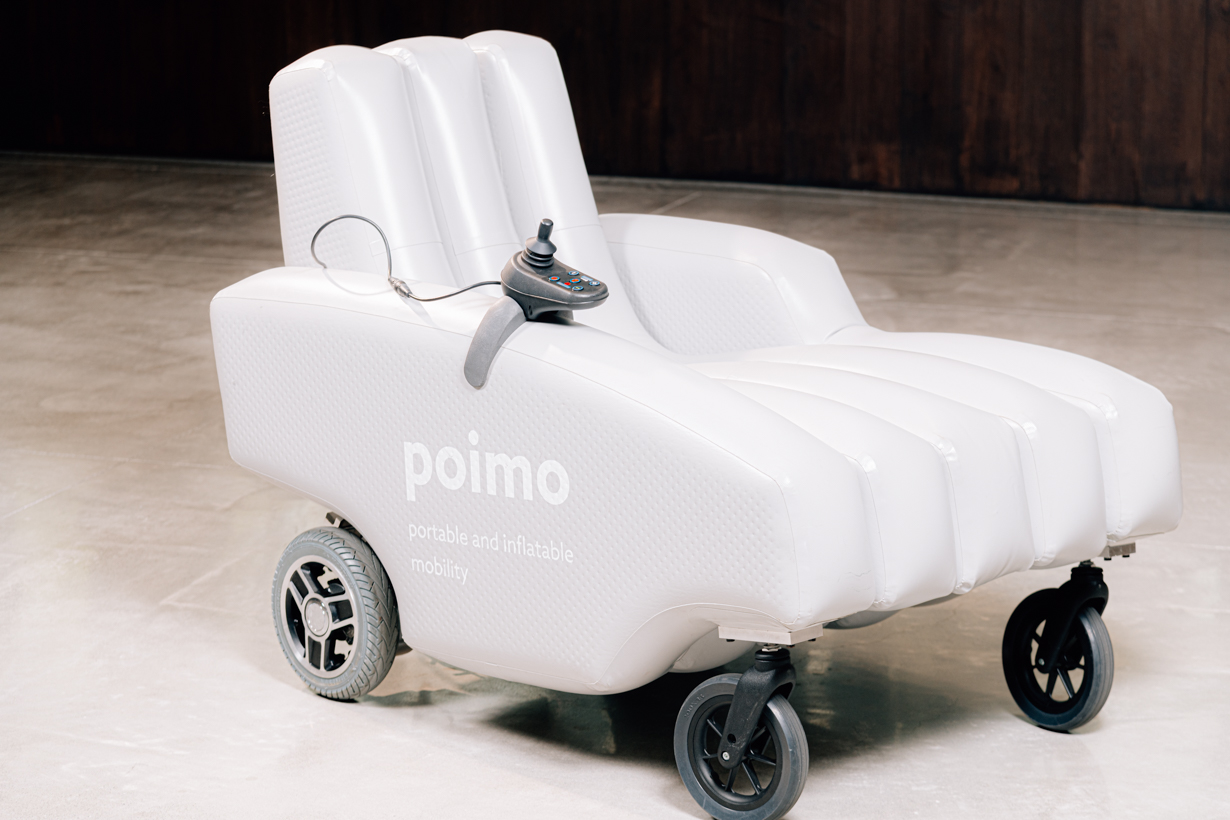
It takes less than 10 minutes to inflate this amazing device!
Yamamura: Something like the Hoipoi Capsule that could grow into something huge in an instant would be extremely convenient, but, on the other hand, I think there is a strong possibility that it might injure the elderly and children. For the sake of safety, we aren't really considering something that could expand to its full size in an instant.

Bulma warning Goku to keep a safe distance from the Hoipoi Capsule.
—Speaking of safety, since poimo are soft, it seems that it wouldn't be dangerous to operate one near other people.
Yamamura: That's correct. Unlike cars which have a hard exterior, the poimo is comparatively much safer since it's made of such a soft material. Of course, we still don't want anyone to hit someone with it though...
If vehicles like the poimo become commonplace, it could be a new approach to solving the problem of accidents, something the automotive industry has been trying to solve since its inception. Vehicles like this have the potential to create a society where people and mobility can coexist peacefully.
—I guess there really are a ton of different possibilities for the future of vehicles!
—I'd like to move on and ask you a bit about Hoipoi Capsules as they exist in Dragon Ball. In your honest opinions, could Hoipoi Capsules actually exist someday?

Yamamura: There are some aspects of the Hoipoi Capsule that wouldn't be too difficult to build, but others would be extremely difficult to pull off. Shrinking something down is totally possible, but making heavy things lighter? That would be a tad difficult.
—In Dragon Ball, they explain it as "breaking an object down into particles and inserting it into a capsule."
Yamamura: There are many ways to break an object down into particles, but the closest (to Dragon Ball) would be reshaping the objects at the atomic level.
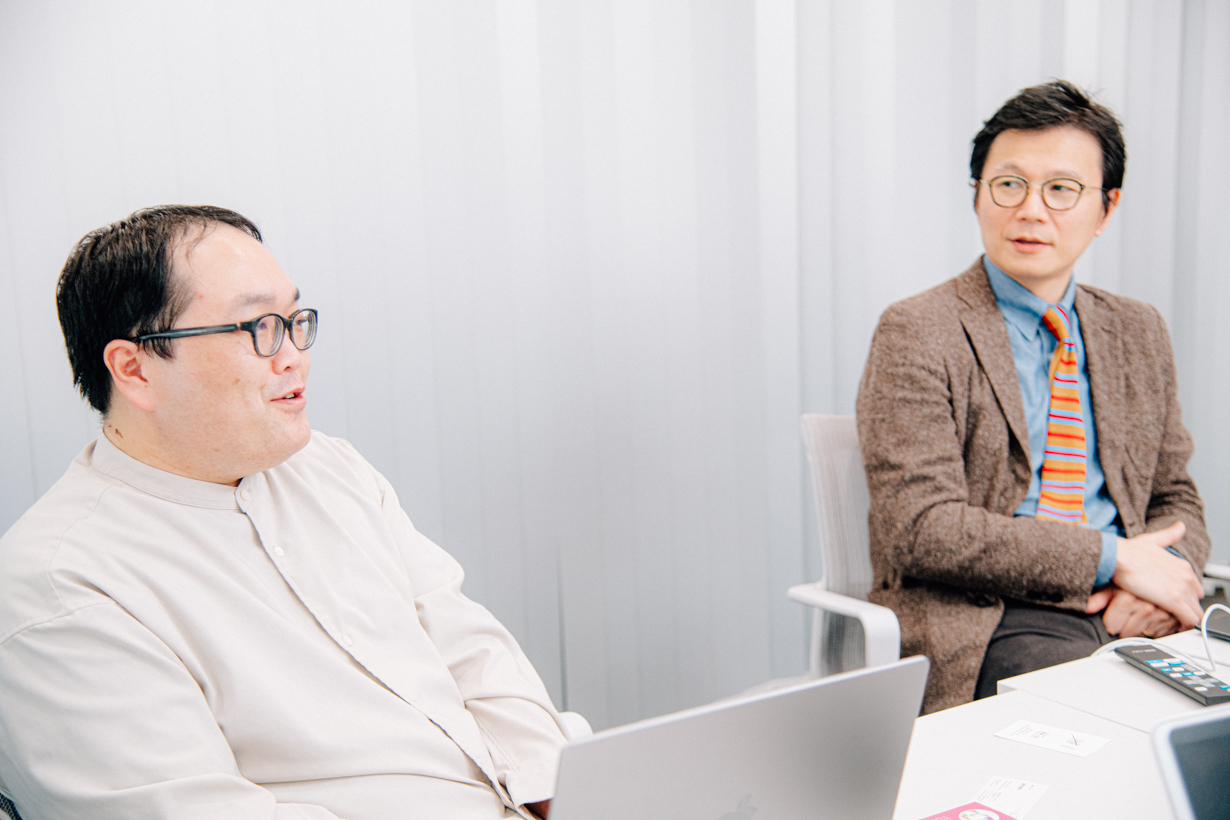
Kawahara: But that sort of method, something that could reshape atoms (the fundamental particles of matter) itself, would require nuclear fusion and nuclear fission. I don't have any idea how we could create an arbitrary substance with modern technology.
Yamamura: One method that might be a little simpler to do is pulverizing an object with some sort of mixer, and then just rebuilding it.
Kawahara: Yes, research on "self-assembly" and "self-folding" is ongoing. A 3D printer prints the basic shapes of lines and particles, and when the printed objects get heated up, it melts and deforms or sticks together to make a new shape. This is called 4D printing.
According to research at the University of Tokyo, flat objects with creases like origami can be heated up and turned into three-dimensional objects.
3D printers take a lot of time to print. But you can print something fast if it's flat, and, if you could print a thin object and make it 3D later, you could really save time and materials.
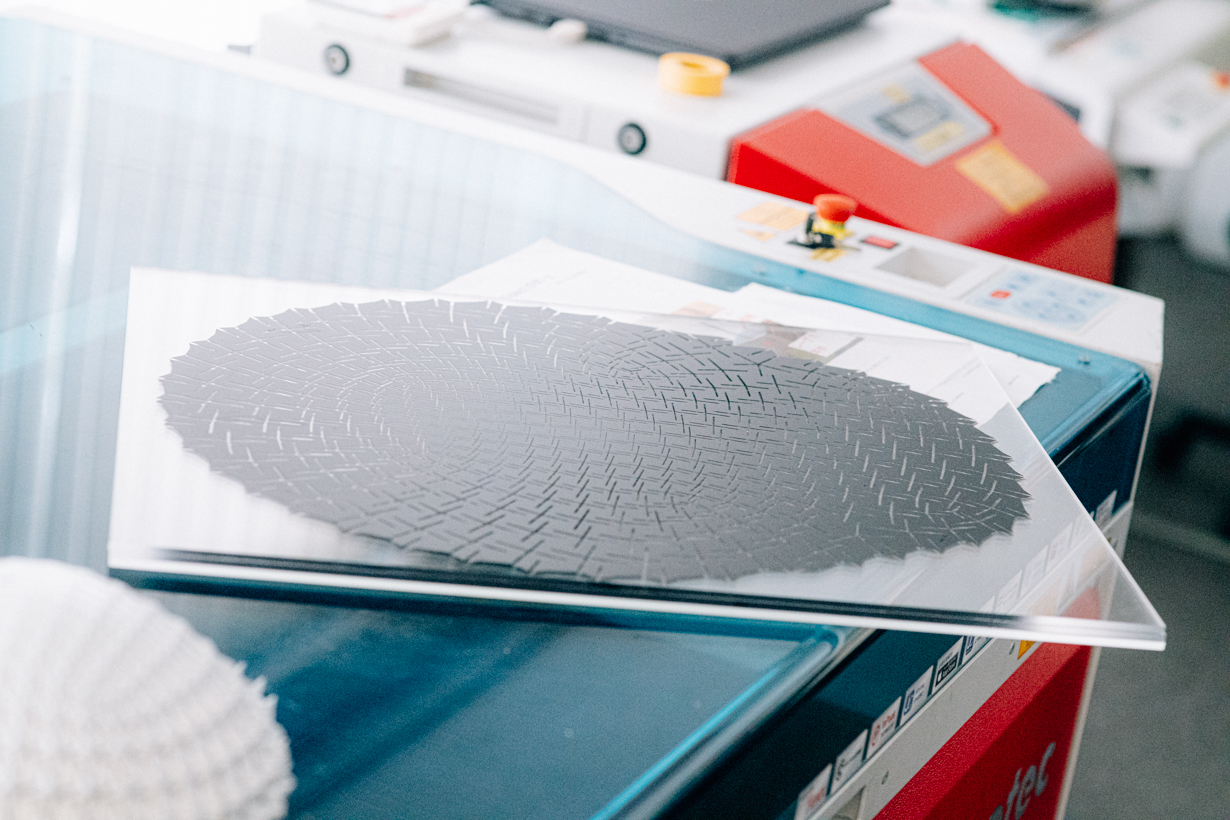
An example of self-folding (Inkjet 4D). When heat is applied along the creases of this flat board...
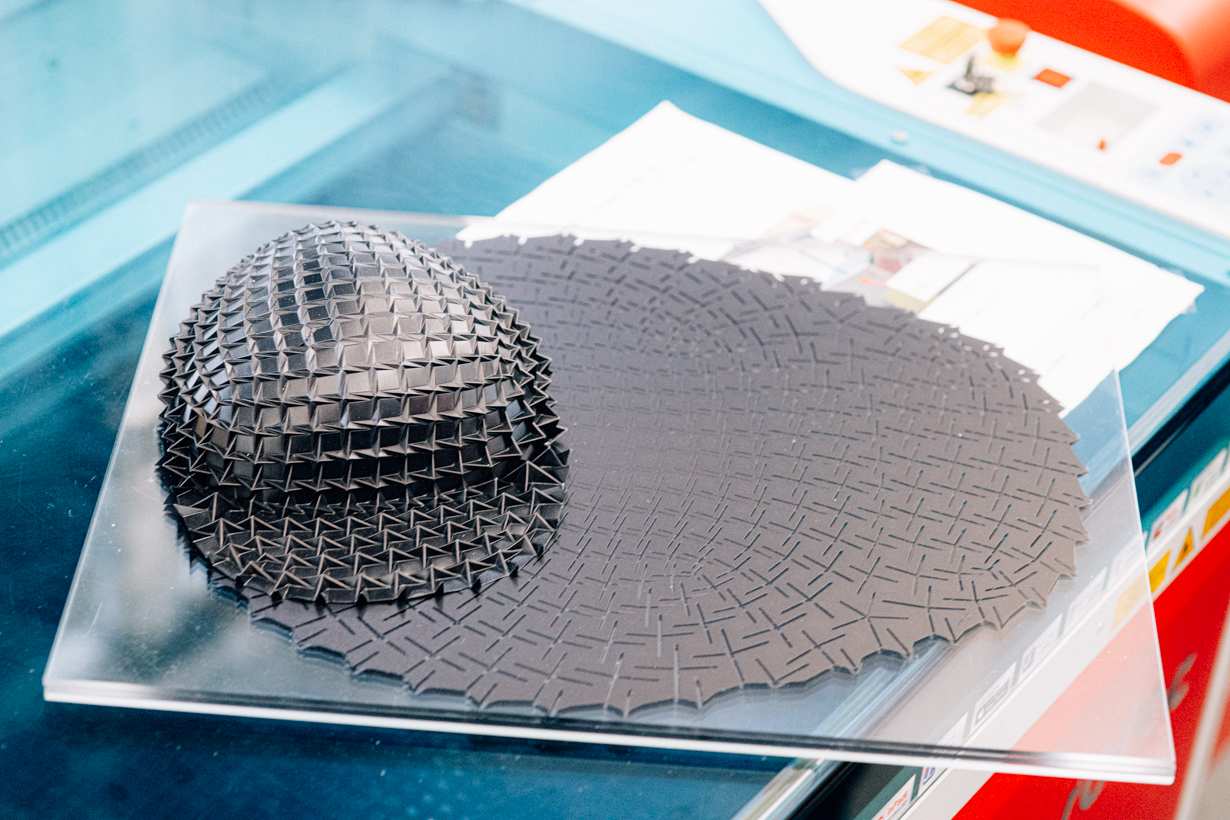
...the board transforms into a hat! (Pictured on the left)
—Even though it's not quite the Hoipoi Capsule, research into making something similar has already started!
Yamamura: In terms of methods that already exist, there's one that uses air. You start with a balloon-like container, and you put air inside.
It's kind of like a ball pit or trampoline for children, and this method is already being used in construction.
Kawahara: Another air-based type of technology is to use some sort of foaming agent that expands when heated. Applying heat creates air bubbles, a bit like Styrofoam, and then it expands.
So far it can't be made into the size of a button like the Hoipoi Capsule, but there will probably be a way to apply pressure and have it shrink back down in the future.

—If technology like these keeps being developed, there will probably be a day in the future where we will have our own Hoipoi Capsules!
—Hoipoi Capsules in Dragon Ball are a little expensive, but how expensive are the real poimo?

Yamamura: The price hasn't been decided yet, but we'd like to have it cost about the same as an electric wheelchair.
—poimo runs on electricity, but how do you charge it?
Kawahara: As of now, you need to plug it in. Ideally though, we would like to use the same sort of technology that smart phones use for wireless charging (charging just by putting it down on a charger), and place panels in different cities where you can charge a poimo by placing it there.
For example, it would be amazing if we could place a charging panel in front of a café and your poimo would charge while you drink tea.

An image of what charging panels installed at storefronts and on sidewalks in Japan could look like. (Provided by the University of Tokyo)
—Just hearing you talk about this makes me excited for it! When will we be able to buy one?
Yamamura: We would like to have them available by 2026.
Kawahara: To be honest, it's already technologically feasible, but there are legal challenges. Additionally, since roads in Japan are so narrow, finding space to operate them in is also an issue.
Yamamura: Also, unlike metal vehicles, where it's easy to predict the likelihood of a part breaking down within a year, it's quite difficult to predict how long poimo's materials will last.
Therefore, I think a good first step is to recruit partners to test drive it, so we'll be able to improve it from there.
—If poimo becomes readily available, what sort of person are you hoping will use it?
Yamamura: At test drive events, elderly people often say that they want one. Once people lose their drivers licenses, it can be hard for them to get around without any sort of vehicle. It would be great if poimo could help solve this problem.
It is also really popular with wheelchair users. poimo can be designed individually, so one could be designed to meet the size and shape of a specific user. Also, even after using a poimo for a long time your body doesn't get stiff, so I'd really like individuals who usually use wheelchairs to give it a try, too.
Kawahara: I've done a lot of research so far, but no matter where I take poimo, people seem really pleased with it.
Even people who were wondering, "What's this weird vehicle?" start smiling once they give it a try. There are no other research projects like this one. I want everyone to try it out at least once.
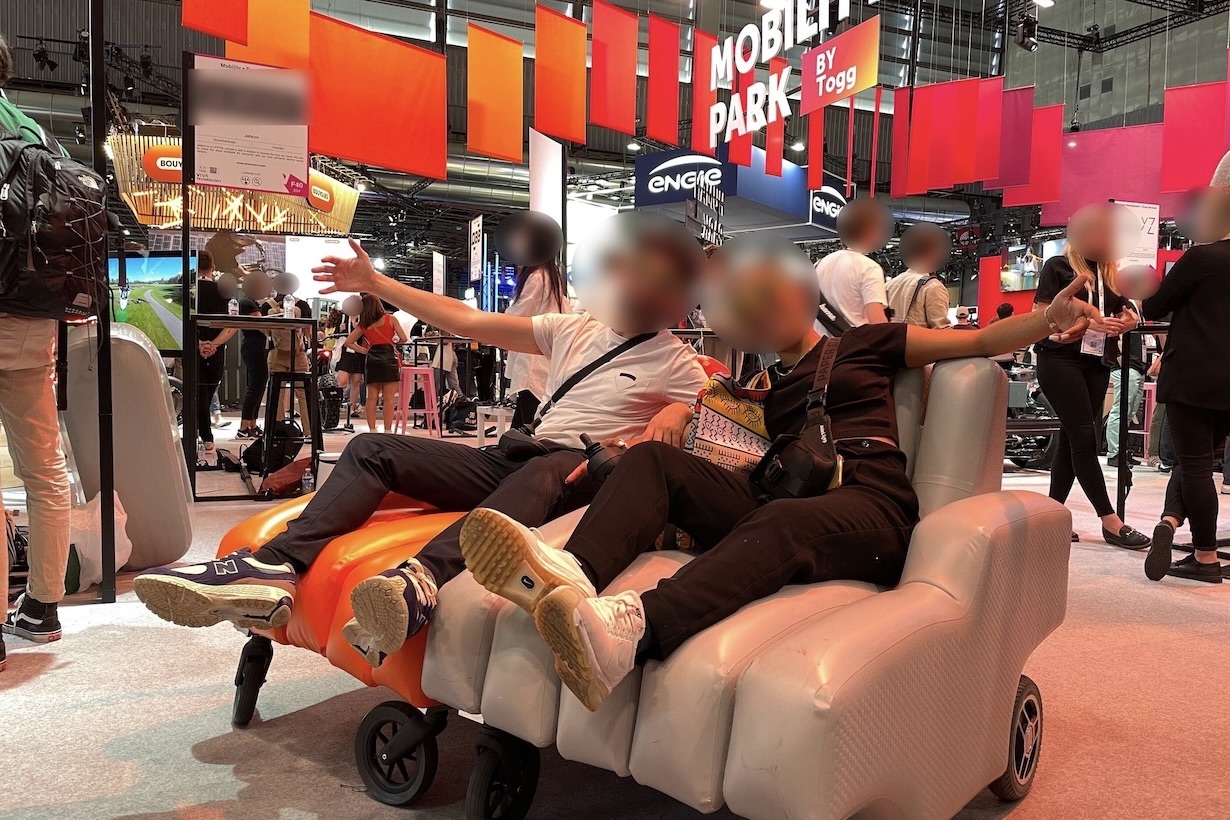
France's VivaTech2022 attendees test driving (Picture supplied by mercari R4D)
—That's great to hear! I have one more question for you two. What would you like to put in a Hoipoi Capsule if it really exists someday?
Yamamura: I want my house in a Hoipoi Capsule! That would really make moving much less difficult.
Kawahara: I want a Hoipoi Capsule with a tent in it. It would be nice to be able to put one up one quickly.
Yamamura: When I'm thinking about new research ideas, I sometimes think about technology in media like Dragon Ball. I try thinking about, "Is the technology I thought was so cool back then possible now?"
I think a lot of Dragon Ball fans who've become researchers are trying to make that happen.
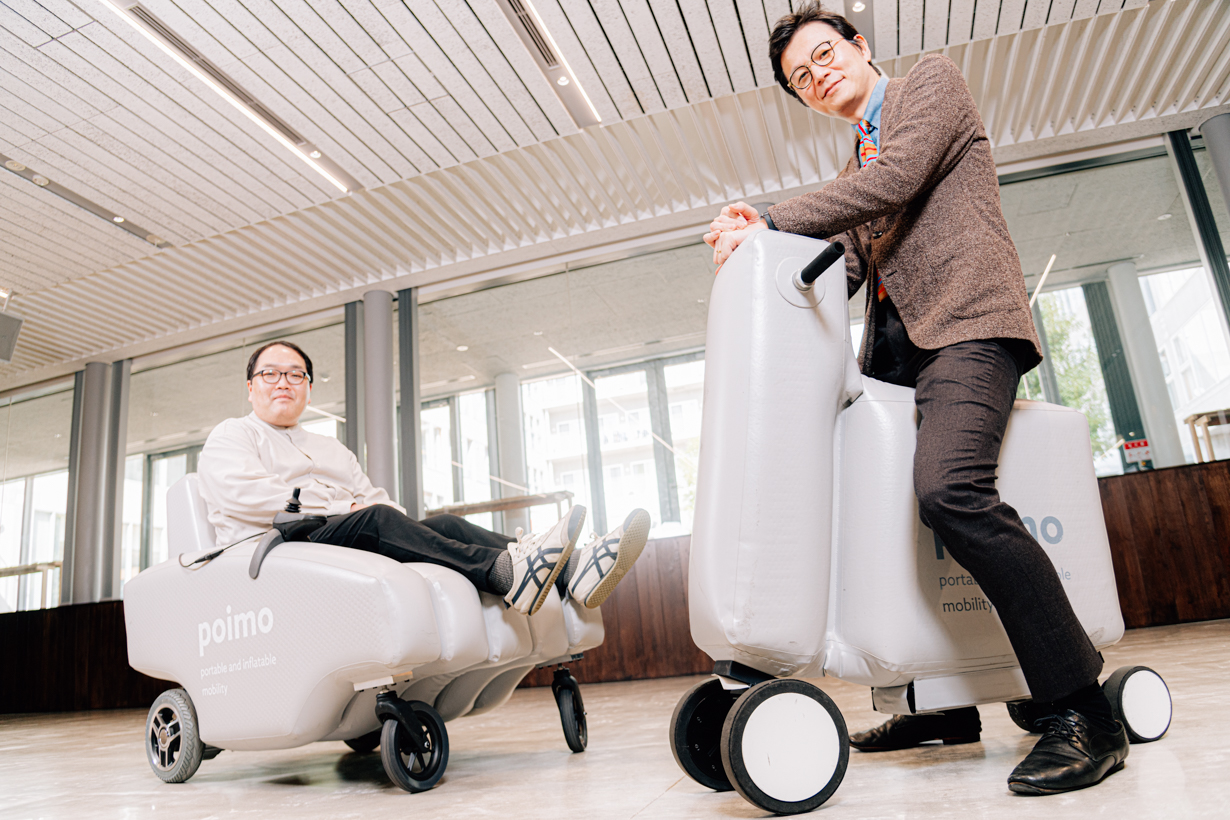
—Thank you so much for your time today!
Photography: Nanami Miyamoto
This site includes machine-translated texts. Please be aware that you might find some unusual expressions that are difficult to understand.
Post
Confirm Post
Post the above comment?
Reply
Confirm Reply
Post the above comment?
Are you sure you want to delete this comment?
Report successful
Post Unsuccessful
This user will be muted.
You will be unable to see comments from muted users in the comments area.
*To unmute users, navigate to the "Comments" area on MY PAGE.
Reply
Confirm Reply
Post the above comment?
Edit
Post


Post
Confirm Post
Post the above comment?
Edit
Post